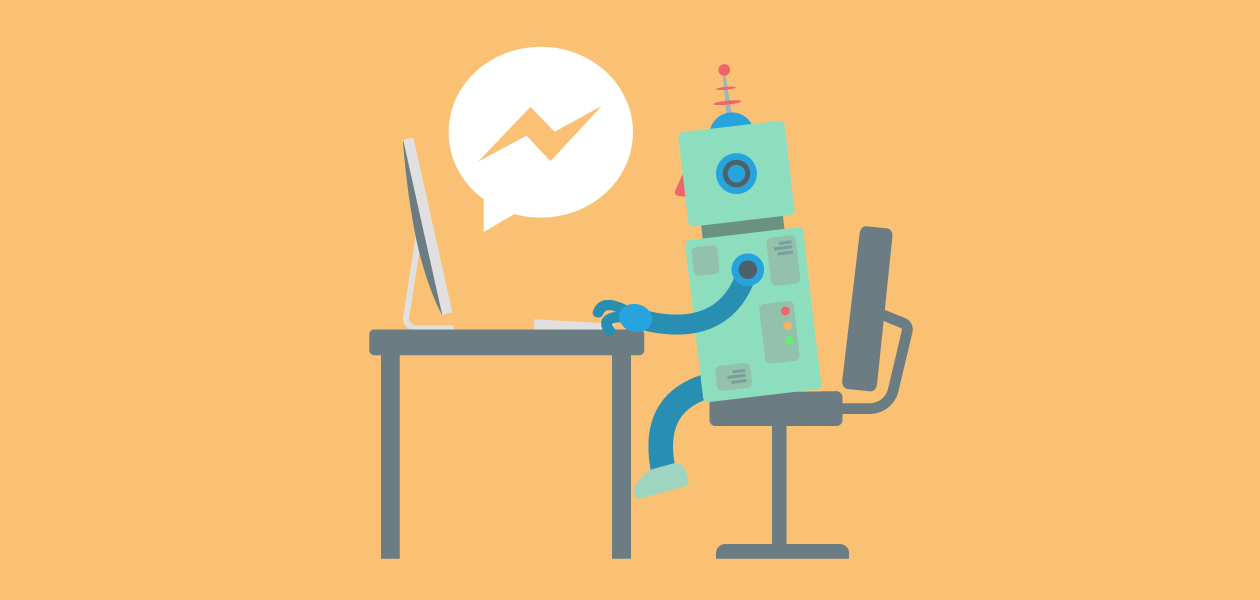A Chatbot is a computer program designed to simulate a conversation with a human over the internet. Chatbots are known by other names, such as chatterbot, bot, IM bot, talkbot, interactive agent and Artificial Conversational Entity. Chatbots live within pre-existing chat programs such as Facebook Messenger, Slack or text messaging.
Chatbots can respond to conversations via text or auditory. They are designed to interact like a human in a typical human conversation. A typical chatbot is used to dialog with users in a customer service or information acquisition application. Chatbots work well in B2C sales, lead generation, marketing and customer service applications. Here’s a very simple explanation about how chatbots work:
- The user enters a word or a statement.
- The system scans for keywords in the user’s statement.
- The system searches a database for a reply that contains the keywords.
- The system selects a response that contains the most matched keywords.
- The system sends this response to the user.
Chatbots come in two different types – one type works from a list of rules or commands, and the other type uses machine learning. What’s the difference?
A rule- or command-based chatbot offers limited interactions because it only responds to a specific set of rules or commands. If you ask this bot a question that hasn’t been programmed into its database, the bot doesn’t know how to respond. A rule-based chatbot is only as smart as its programming.
Machine learning is the ability of a computer to learn without being programmed. A chatbot that uses machine learning is another way of describing AI, Artificial Intelligence. This type of bot understands language, not just a list of rules or commands. The key difference is that a chatbot that uses machine learning actually learns from human conversations and uses that information to provide better answers in the future. This type of chatbot is an intent-based program.
This is a very different way to program a computer. The human creates an intent, which is the the desired outcome or goal, and the computer autonomously figures out how to make it happen. Human build the “guard rails” around the software, but the software actually learns how to manifest the intent.
Here is an example of a command-based chat bot:
Let’s say you have a sales or support question for your cellular phone service provider. You type the question into the little chat box that pops up at the bottom of the screen. You type your question and you get a response. Based on the answer, you type another question, and you see another response. This process continues until the bot can no longer answer your question because it’s too specific to your account or it’s too technical and requires human intervention. This is an example of a command-based chatbot. The bot has been programmed with a huge list of keywords and responses to those keywords. When you type that keyword, you get the response that was programmed for that keyword.
Here is an example of an intent-based chat bot:
The intent-based chatbot is using machine learning or AI to craft responses to your question. It is learning from you, what you say and how you say it. It creates a response based on what it thinks you want know. To see how it works, check out Ruuh on Facebook.
Here is an example of a conversation with Ruuh about the weather. I asked for the weather and Ruuh gave me an accurate answer. Ruuh also gave a typical human response about what a human might do outside based on the weather. Then I asked Ruuh to convert from Celsius to Fahrenheit and it gave me the mathematical formula to convert the temperature. Ruuh wasn’t quite smart enough to follow the conversation and convert the temperature for me. Ruuh didn’t give me the exact answer I wanted, but it was close. Chatbots are an emerging and evolving technology that will continue to explode, not only in the world of technology, but in the daily lives of humans.
Chatbots are an emerging and evolving technology that will continue to explode, not only in the world of technology, but in the daily lives of humans.
“…when seeking quick assistance for a simple issue, people prefer to have a live chat with a human agent (37%).
Source: Decoding Americans’ Experiences with Chatbots [2023 Study]
We will write more about chatbots and how chatbots are changing our world in the next blog. In the meantime, if you want to be a beta tester for the Ometrics Ochatbot, go to ochatbot.com. We are releasing a number of bots from shopping to support as well as fun bots on Facebook such as Ojokebot, you can play with it here.
To learn even more about chatbots, please visit The Complete Guide to Chatbots page to read or download the ebook.
- The Role of Chatbots in Enhancing Customer Experience: A Deep Dive - March 14, 2024
- Tackling Low Conversion Rates: A/B Testing Strategies Fueled by AI-Based Insights - March 14, 2024
- Why Support Bots Can’t Keep Up: The Case for E-commerce Specific Chatbots - February 28, 2024



